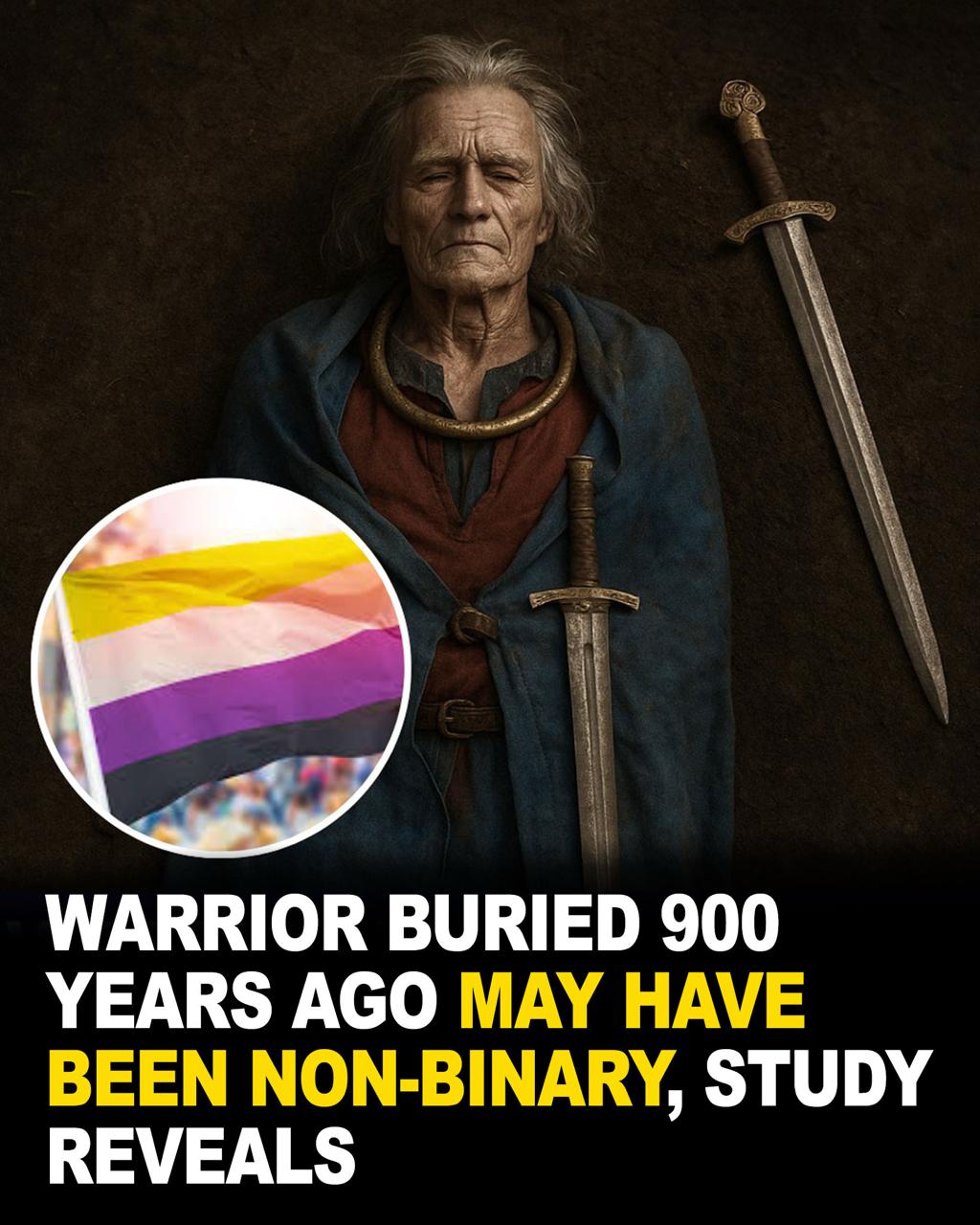A remarkable discovery in a Finnish hillside has added a new layer to our understanding of gender identity in medieval Europe. Recent DNA analysis has revealed that a medieval warrior once believed to be female may have been nonbinary, a finding that challenges long-held assumptions about rigid gender roles in early European societies.

The grave in question, located in Suontaka Vesitorninmäki in southern Finland, was first unearthed in 1968. At the time, archaeologists interpreted the burial as that of a high-ranking woman warrior due to a combination of items found at the site—a sword, which was typically associated with masculinity, and jewelry and woolen garments traditionally worn by women during that period. For decades, the discovery fueled theories about powerful women warriors in medieval Scandinavia.
However, a new study published in the European Journal of Archaeology has brought forth compelling genetic evidence that paints a more complex picture. Researchers extracted ancient DNA from a small sample of the skeletal remains and found that the individual likely had Klinefelter syndrome, a condition where someone is born with an extra X chromosome, resulting in an XXY configuration. People with this condition are anatomically male but may exhibit traits that don’t fall squarely into male or female categories, such as reduced testosterone, breast development, and infertility. According to lead researcher Ulla Moilanen, an archaeologist at the University of Turku, this biological variation could have contributed to the individual’s unique gender presentation.
She suggests that the presence of both feminine and masculine grave goods implies that the community might have acknowledged, and even honored, this person’s nontraditional gender identity. Moilanen points out that if the physical characteristics of Klinefelter syndrome were apparent, the individual may not have been viewed strictly as male or female. Rather than being marginalized, the burial treatment suggests that this person held a position of respect. Although the skeletal remains were badly degraded, scientists used genetic modeling and analysis to determine with high confidence that the individual possessed an XXY chromosome pattern. This conclusion is further supported by the extraordinary mix of grave goods—both martial and decorative—found at the site, indicating a high social standing that likely transcended traditional gender boundaries. What makes this case especially noteworthy is its broader cultural context.
In early medieval Scandinavia, gender roles were known to be sharply defined, particularly in warrior culture where masculinity was celebrated and expressions of femininity among men were often ridiculed or suppressed. The Suontaka grave appears to be a striking exception to these norms, suggesting that gender diversity was not only present but potentially acknowledged and valued within certain communities. Moilanen emphasizes that while modern terms like “nonbinary” are useful for discussing gender diversity today, applying them to historical figures can be problematic. Since identity is deeply personal, there is no way to definitively know how this person viewed themselves. Furthermore, not all individuals with Klinefelter syndrome identify as nonbinary or intersex in modern contexts. Nonetheless, the study represents a significant contribution to the evolving conversation around gender and history. Experts such as Leszek Gardela of the National Museum of Denmark, who was not involved in the study, praised the research as a fascinating and well-supported exploration into the complexity of identity in the past. He noted that it demonstrates a deeper and more nuanced understanding of gender in early societies than many previously believed. The implications of this discovery are profound. It serves as a powerful reminder that gender diversity is not a modern concept but rather a timeless aspect of the human experience. As we continue to uncover evidence from the past, we are reminded that societies throughout history may have been more inclusive and open-minded than we often give them credit for. In essence, this ancient grave tells a story that echoes into the present, reinforcing the idea that human identity has always existed on a spectrum—long before we had the words to describe it.





